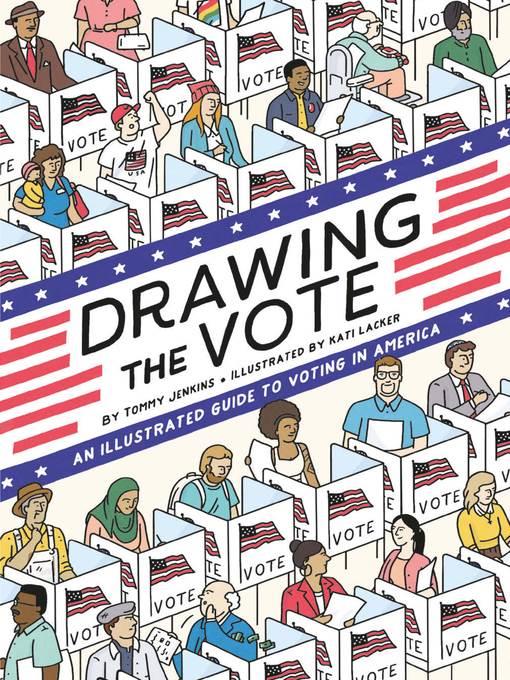
Drawing the Vote
An Illustrated Guide to Voting in America
کتاب های مرتبط
- اطلاعات
- نقد و بررسی
- دیدگاه کاربران
نقد و بررسی

Starred review from January 1, 2020
Gr 8 Up-After seeing his students become disillusioned following the 2016 U.S. presidential election, college professor and author Jenkins responded by creating a graphic novel that highlights key events and issues throughout history that have shaped the way Americans vote. He covers familiar topics such as the Boston Tea Party and women's suffrage but also sheds light on gerrymandering and voter intimidation. Jenkins's perspective is balanced, as he reflects on how both political parties have failed to address voting issues. Lacker's simple, uncluttered artwork balances out jam-packed text bubbles, adding clarity to the rich mosaic of information. VERDICT While voter apathy led to many refusing to participate in the 2016 elections, anticipation for the 2020 elections has been building steadily. Jenkins's rousing work will inspire students to educate themselves on the issues-and, when the time comes, to vote early and often.-Elise Martinez, Zion-Benton Public Library, IL
Copyright 2020 School Library Journal, LLC Used with permission.

January 13, 2020
This rapid-fire history illustrates the evolution of and challenges to U.S. voting rights from the colonial-era Stamp Act to modern voter ID laws. Leading up to the 2018 midterm elections, Jenkins, a literature professor in North Carolina, asked his students if they planned to vote. To his dismay, only a few raised their hands. What, he wondered, could “show people, especially young people, how important voting is?” This graphic work takes that lofty aim, but in the contemporary context of the President calling elections “rigged” and foreign government’s interference in political campaigns, Jenkins notes, “it takes a Herculean effort to shake up the political status quo.” How, he argues, could the U.S. actually make it easier for more people to vote? Taking a broad survey of 250 years, at times the narrative unfolds like a well-illustrated Wikipedia article. But the exposition and Lacker’s simple but energetic illustrations combine to pack valuable information on each page, while making even complex issues (such as the racism of white suffragists who fought for the 19th Amendment) easy to follow. Suited best to younger readers new to the topic, Jenkins’s work lays out the high-stakes history clearly and succinctly. Agents: Su Wu and Judy Hansen, Hansen Literary.

June 5, 2020
The act of voting seems deceptively simple, in which an individual's ballot is tallied with others until an equitable decision is reached. Here, debut creators Jenkins and Lacker show the truth to be a complicated series of historical compromises and outrageous manipulations. Pointing out pivotal junctures in which greed, commerce, and various self-interests motivated how and why voting changed, they bring fascinating connections to light. For instance, slave states wanting to count slaves as citizens but deny them the right to vote helped solidify the idea of the Electoral College with the Three-Fifths Compromise, the ramifications of which still effect election outcomes. Women's suffrage, the Voting Rights Act of 1965, the Tea Party, and the 2016 Election all undergo exploration beneath the artistic microscope. VERDICT Written with a progressive tone, this work's clear factual nature makes it a worthy read for anyone across the political spectrum, with the straightforward art and fast pace complimenting a thorough if breezy and complex history of the vote.--Douglas Rednour, Georgia State Univ. Libs., Atlanta
Copyright 2020 Library Journal, LLC Used with permission.

























دیدگاه کاربران